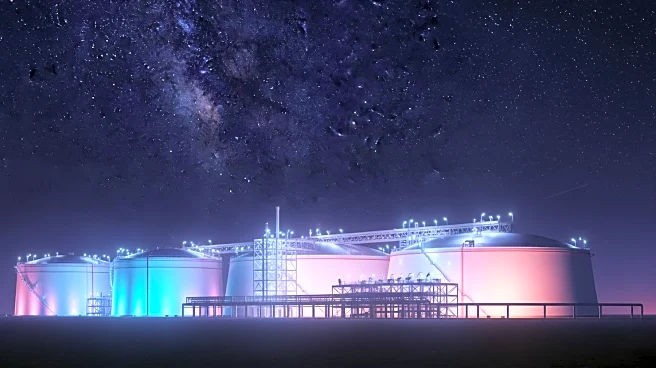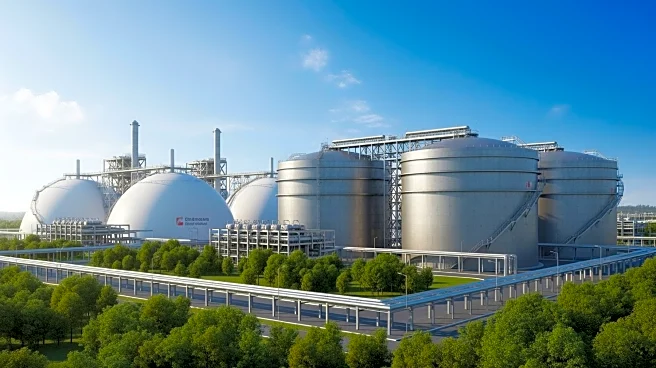What's Happening?
Liquefied natural gas (LNG) exporters in North America are set to significantly increase their liquefaction capacity by 2029. According to the U.S. Energy Information Administration (EIA), the U.S. plans to more than double its LNG capacity, adding an estimated
13.9 billion cubic feet per day (Bcf/d). This expansion will elevate the U.S. from its current status as the largest LNG exporter globally, with a capacity of 15.4 Bcf/d. The broader North American region, including Canada and Mexico, is expected to see its export capacity rise from 11.4 Bcf/d at the start of 2024 to 28.7 Bcf/d by 2029, contingent on the completion of ongoing projects. The International Energy Agency notes that these additions will account for over 50% of global capacity increases during this period.
Why It's Important?
The planned expansion of LNG capacity in North America is poised to have significant implications for global energy markets. As the U.S. solidifies its position as a leading LNG exporter, it could influence global energy prices and supply dynamics, offering more competitive options for countries seeking to diversify their energy sources. This growth in capacity may also bolster North America's energy security and economic stability, providing a buffer against geopolitical tensions that affect energy supplies. Additionally, the increased capacity could drive investment in infrastructure and technology, further enhancing the region's energy sector.
What's Next?
If the projects proceed as planned, North American LNG exporters will need to navigate regulatory approvals, environmental considerations, and market demand fluctuations. Stakeholders, including government agencies and energy companies, will likely focus on ensuring the infrastructure is developed sustainably and efficiently. The expansion may also prompt discussions on energy policy and international trade agreements, as countries adjust to the shifting landscape of global energy supply.
Beyond the Headlines
The expansion of LNG capacity in North America could have long-term environmental implications, as increased production and export activities may impact local ecosystems and contribute to greenhouse gas emissions. This development may also influence cultural and economic shifts in regions dependent on energy exports, potentially affecting job markets and community dynamics.














